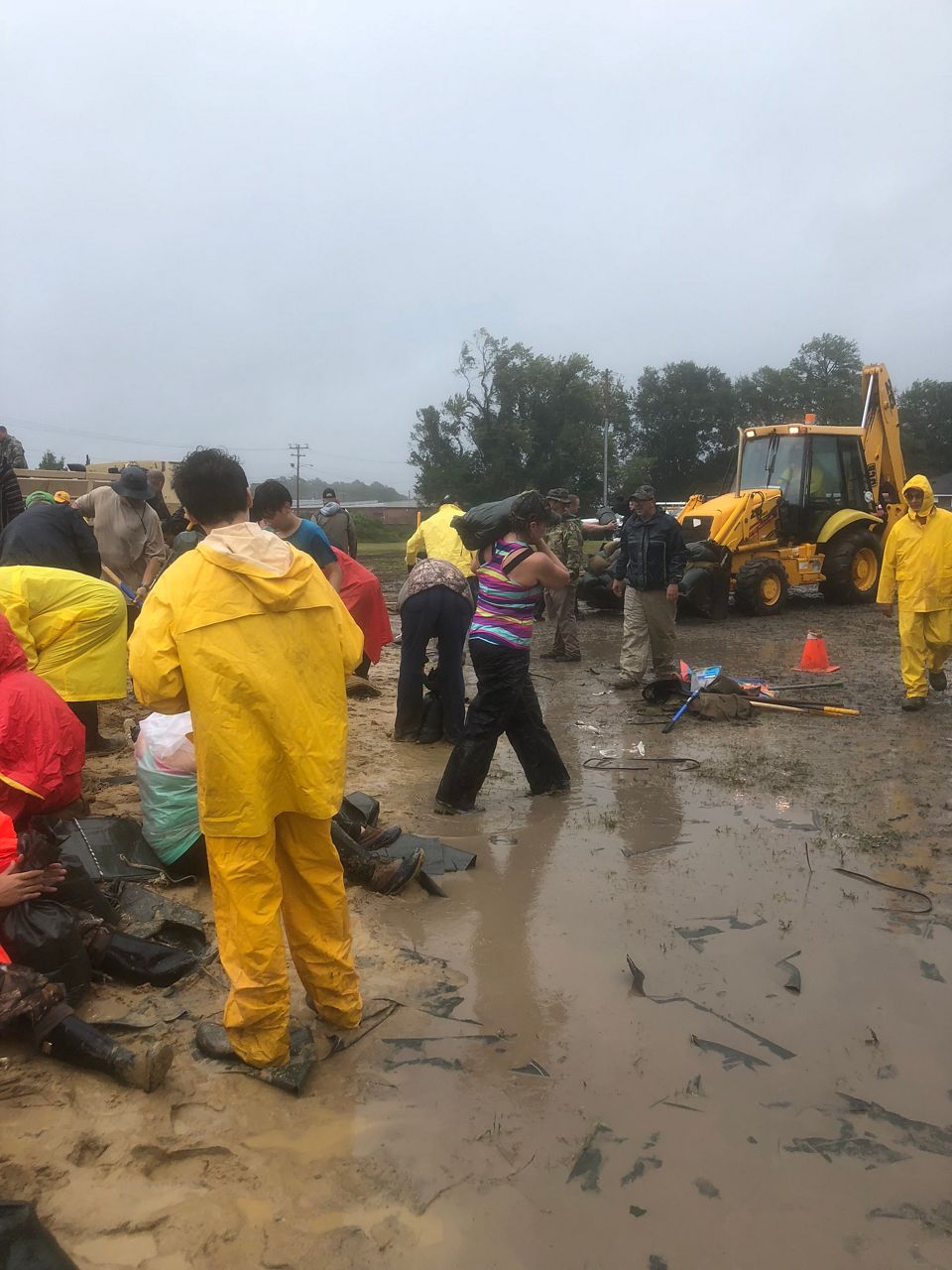LUMBERTON, N.C. — In October 2016, as Hurricane Matthew dumped a foot and a half of rain on eastern North Carolina, the food pantry in Lumberton was filled with several feet of water.
“It was waist-deep water around this entire corridor, particularly the center,” said Brianna Goodwin, executive director of the Robeson County Church and Community Center.
The hurricane also flooded Interstate 95, cutting off Lumberton from the rest of the world.
“Quite literally you were trapped in Robeson County, we were an island when it first flooded,” Goodwin said.
To prevent something similiar from happening again, the city is building a $10-million floodgate to try to prevent the devastation and flooding like residents saw in 2016.
The Church and Community Center is the largest faith-based nonprofit in Robeson County. It hosts health clinics, gives out medical supplies, and is home to the largest food pantry in the county.
The flooding from Hurricane Matthew forced the center to find a new, temporary home. But in the aftermath of the storm, they were still able to step up and hand out things like medical supplies and feminine hygiene products out to the community.
“Every crisis, we never shut down,” Goodwin said.“Every crisis, we never shut down,” Goodwin said. “So we might have to adjust, and we might have to make things look a little different, but we never stopped serving, no matter what. Even if we're displaced, we don't stop serving.”
Two years later, the city of 21,000 faced the same problem when Hurricane Florence hit.

“Statistically, we thought we would have some time to really prepare for this,” said Rob Armstrong, the city’s Public Works Director. “Since Matthew was called a 500-year storm, you know, we thought we would have at least a decade right to plan this.”
Armstrong is the head of the floodgate project. The floodgate will be in west Lumberton, covering a railroad underpass at I-95. It will be right behind Fifth Street, an area that backs up to the Lumber River and is vulnerable to flooding.
The floodgate will protect places like the Community Center, one of the many buildings on Fifth Street that was flooded by Hurricane Matthew.
It is one of many mitigation efforts the town is implementing. Armstrong said the city will have spent well over $30 million on projects in the decade after Matthew. Some of those projects include portable pumps that prevent rainwater from pooling, and a barrier around the city’s water plant to protect it from flooding. Floodwaters from Matthew shut down the city's water treatment plant.
“You had to live through no water,” Armstrong said. “You know, you can go through no power, power losses even for days at a time. But to be without water, I think you can ask anybody that's experienced it. It was a difficult position to be in.”
Most of those projects are funded by state or federal money. The floodgate has received $10 million in funding from various sources, including $5 million from the North Carolina General Assembly.
“I tell you, none of this could really happen without outside funding,” Armstrong said.
The state and federal governments plan to put tens of billions into infrastructure in North Carolina over the next decade.
That money is all important for communities like Lumberton that are still reeling from past flooding. Remnants of the floods are still visible throughout the city, in the abandoned buildings, and the people that left and never came back.
“There's measurable population loss, almost 150,000 down to around 120,000,” Goodwin said. “So tens of thousands of people are no longer here.”
“Maybe they won't have to endure what they have before and that the city and the county, you know, the powers that be are really concerned about their well-being and taking proactive steps to prevent what happened from happening again,” Goodwin said.
Armstrong said construction on the floodgate will start once another infrastructure project, the widening of an I-95 bridge, finishes.






